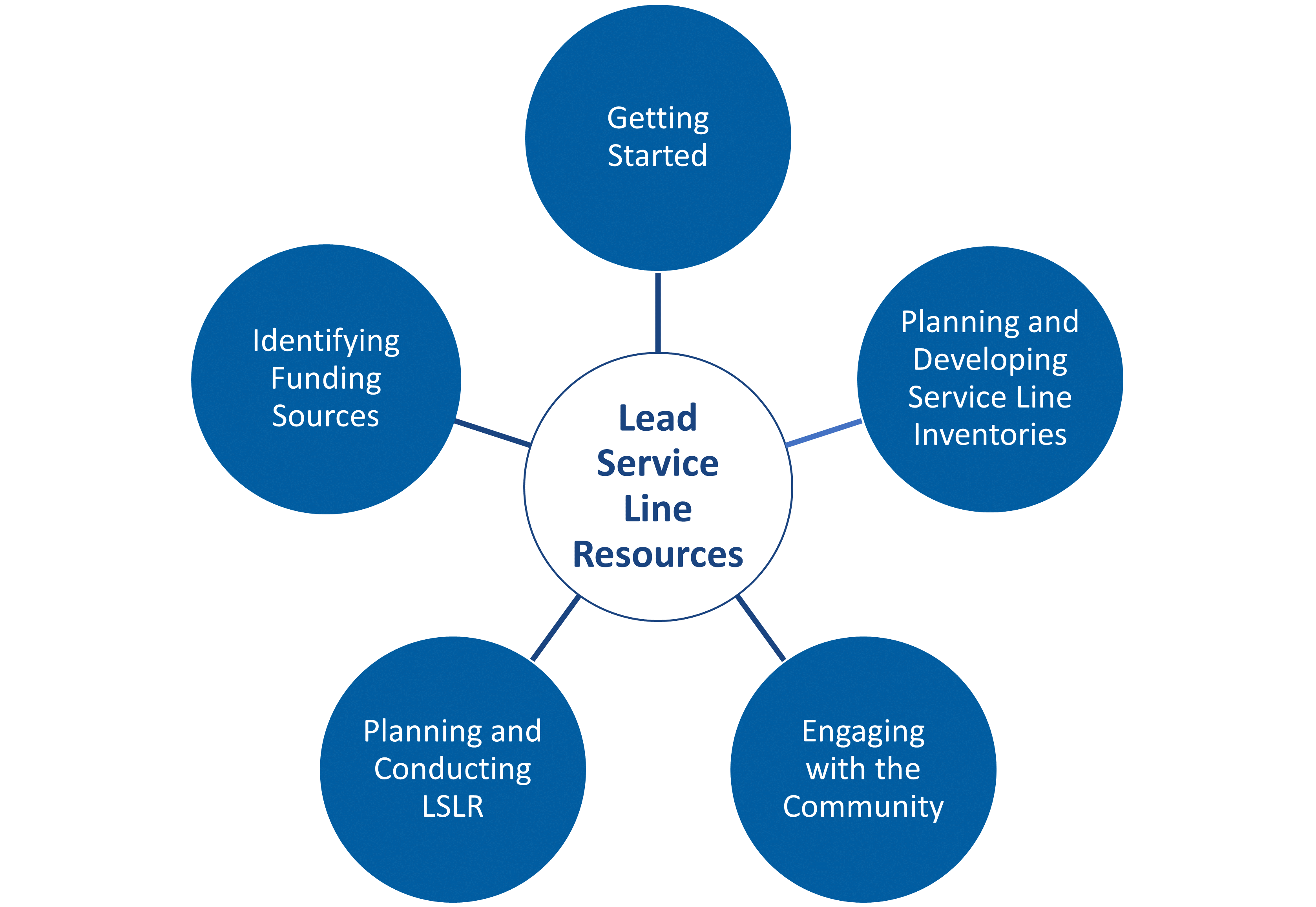Lead Service Lines
An estimated 9.2 million lead service lines (LSLs) serve water to properties in communities across the United States. In order to meet EPA's goal of replacing 100% of LSLs, communities, water systems, and homeowners can access the variety of materials to engage with community members, identify funding sources, plan an inventory, and conduct lead service line replacement (LSLR).
Click the circles below for more information and available resources related to lead service lines.

Getting Started
The most common sources of lead in drinking water are lead pipes (service lines), and brass or bronze faucets and fixtures. Establishing an inventory of service line materials and identifying the location of LSLs is a key step in getting them replaced and protecting public health. Learn more about getting started with LSL identification and replacement.
Planning and Developing Service Line Inventories
Service line inventories are the foundation from which water systems take action to address a significant source of lead in drinking water – LSLs. Establishing an inventory of service line materials and identifying the location of LSLs is a key step in getting them replaced and protecting public health. Learn more about planning and developing a service line inventory.
Engaging with the Community
EPA has compiled helpful materials for educating customers and stakeholders about the risks of exposure to lead in drinking water and how to reduce these risks, as well as materials describing the replacement process and relaying financing information. Learn more about engaging with the community during the entire LSL identification and replacement process.
Planning and Conducting Lead Service Line Replacement (LSLR)
EPA has a variety of resources to support water systems and states with planning and conducting LSLR including common challenges and best practices. Learn more about planning and conducting LSLR.
Identifying Funding Sources
There are a variety of federal and non-federal funding sources available to assist states and water systems with each step of the LSLR process (e.g., developing an inventory, replacing lead service lines). Also available are a variety of case studies discussing how systems were able to successfully utilize a variety of funding opportunities towards their LSLR programs. Learn more about identify funding sources for LSL identification and replacement.
